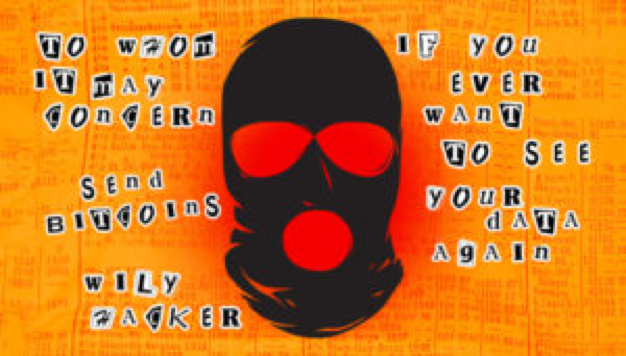
If your building was on fire, what would you grab as you escaped? Many today (myself included) would consider… their laptop. Why? We live in the digital age, and laptop is synonymous with life! Yet, even without the fire, our lives – I mean laptops – are in danger every day. In fact, at any moment we could be standing with the gun to our heads, virtually speaking. How so? Ladies and gentlemen, meet ransomware. In reality, this digital heist has been around for decades, but its attacks come in waves. In fact, we are staring at the crest of a massive wave of ransomware attacks approaching, but this time their nature has changed. Now the targets are businesses. In the past few months, multiple hospitals as well as the University of Calgary faced ransomware cyberattacks. The Hollywood Presbyterian Hospital ended up paying $17,000 in ransom, and I don’t know about you, but we don’t have $17,000 sitting around. So let us address the nature and operation of ransomware so we can keep your files where they belong.
What is the Hold Up?
I. The Delivery System
There are several ways the ransomware can sneak into your computer.
- It can be bundled into software that you download from third-party sources.
- Emails from unfamiliar sources may try to convince you to download files, or they contain links to infected websites. The emails often imitate legitimate sources but contain slightly altered spelling, spacing, or grammar.
- Unfamiliar websites as well as ones that you trust that have been hacked may download ransomware onto your computer when you access the site.
- Removable drives may contain ransomware which transfers to your computer when connected.

II. The Method
There are two types of methods for ransomware: encrypted files and hidden files.
- Encrypted Files: Hackers encrypt the files on your computer, then demand payment in return for the key to decrypt these files. In some cases, hackers may threaten to delete files if payment is not made within a certain deadline.
- Hidden Files: Hackers may also hide your files in an irretrievable place and refuse to return them until payment is made.
The actual ransom demand may come in many forms. Ransomers may seize control of your computer so that you lose all access, often displaying a deceptive message compelling you to pay for the return of control, or they may flash highly inappropriate photos (now imagine that in the company’s morning announcements) along with demands for payment.
Lastly, the payment is requested in different forms. For individuals, the demand is often low, maybe $10, to increase the likelihood of payment. Companies are another prey entirely, however. As previously mentioned, one hospital paid $17,000, but that was a mere fraction of the original demand. None of us have time for any tomfoolery of this sort! Let’s discuss how to avoid the whole situation altogether.
Taking the Gun from the Shooter
I. Avoid Malware
Download software only from reputable sites, and read everything you’re downloading. Don’t open links or attachments in suspicious emails as described earlier. Avoid unfamiliar websites, and keep your antivirus software and operating system files up to date.
II. Back up All the Data!
Even with all of these precautions, hijackers could still strike. They wouldn’t be a threat if they weren’t clever and persistent, would they? The safest measure is to back up your files off-site. That’s right, offshore like the Cayman’s. Well – not quite so exotic. By off-site, I mean a separate physical location from your computer. An external hard drive should be disconnected after backup, otherwise ransomware can easily transfer from your laptop to the hard drive. The best prescription for this ailment, however, is automatic cloud backup. Along with this, you’ll also need the tools to reimage your system. For more details, feel free to contact us!
Don’t forget to check out Netwise on Facebook and Twitter for more tips on the cyber-war.

Tell hackers beware, there’s no money over there!